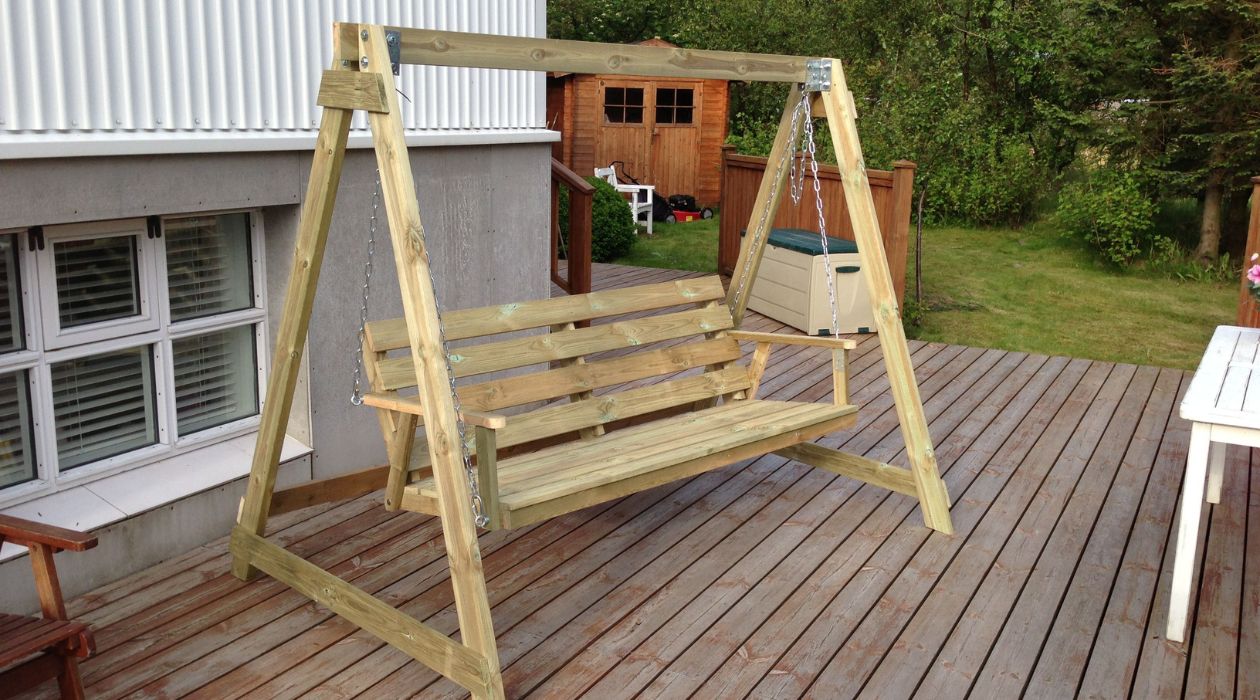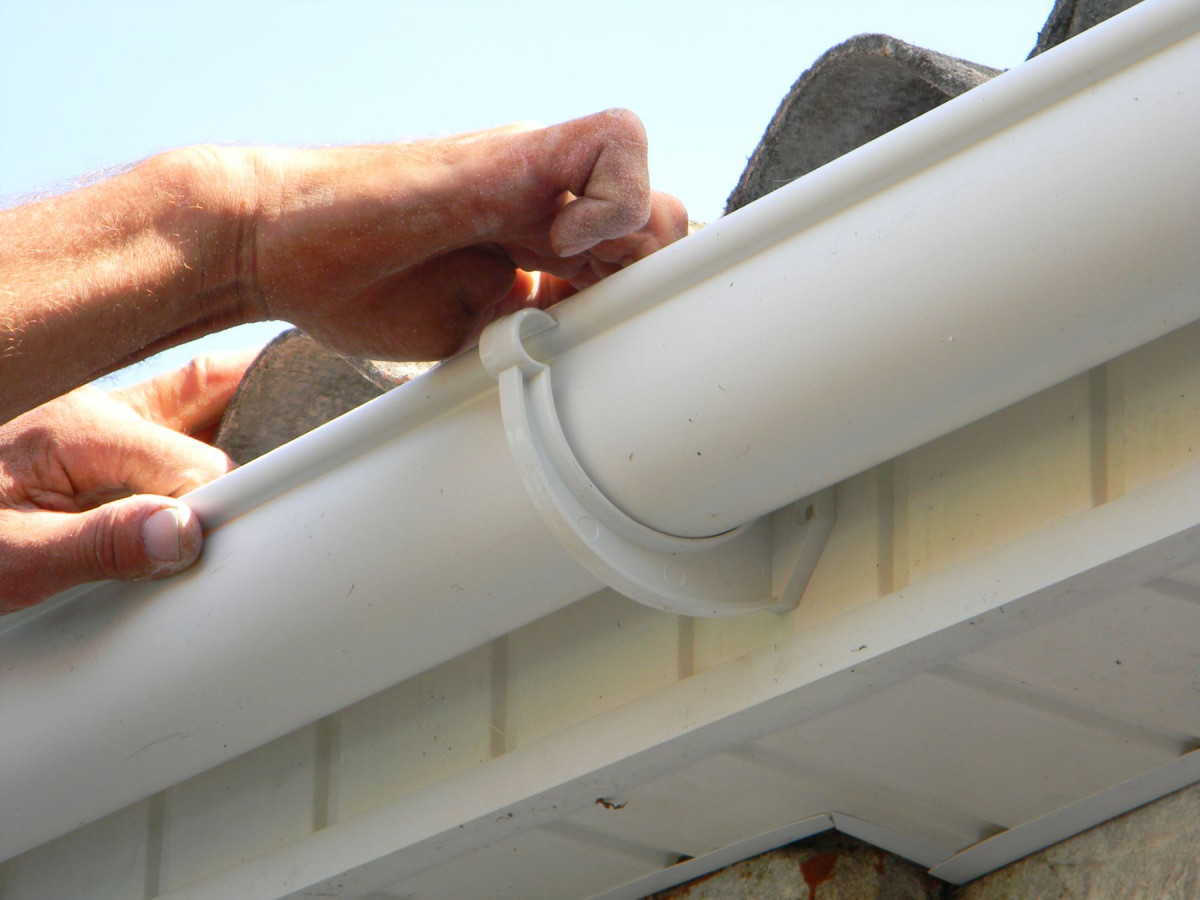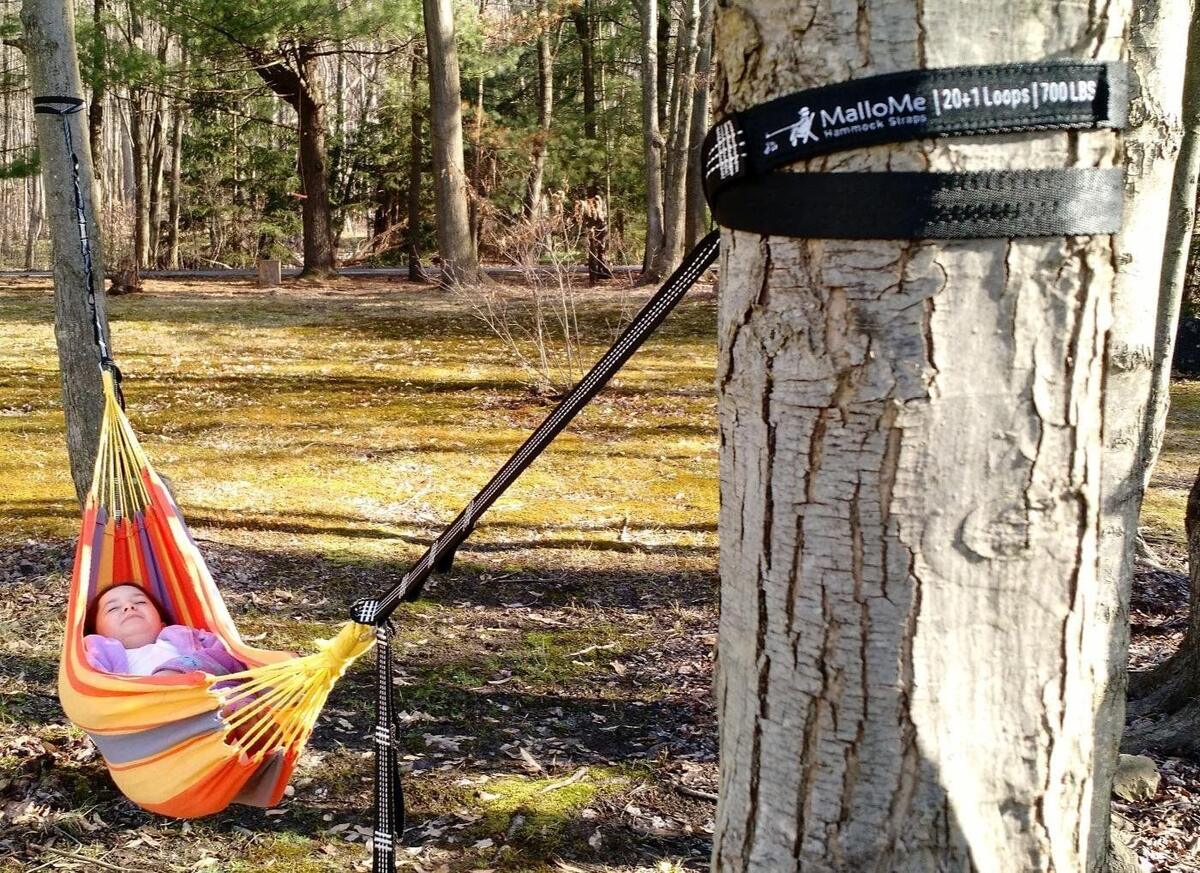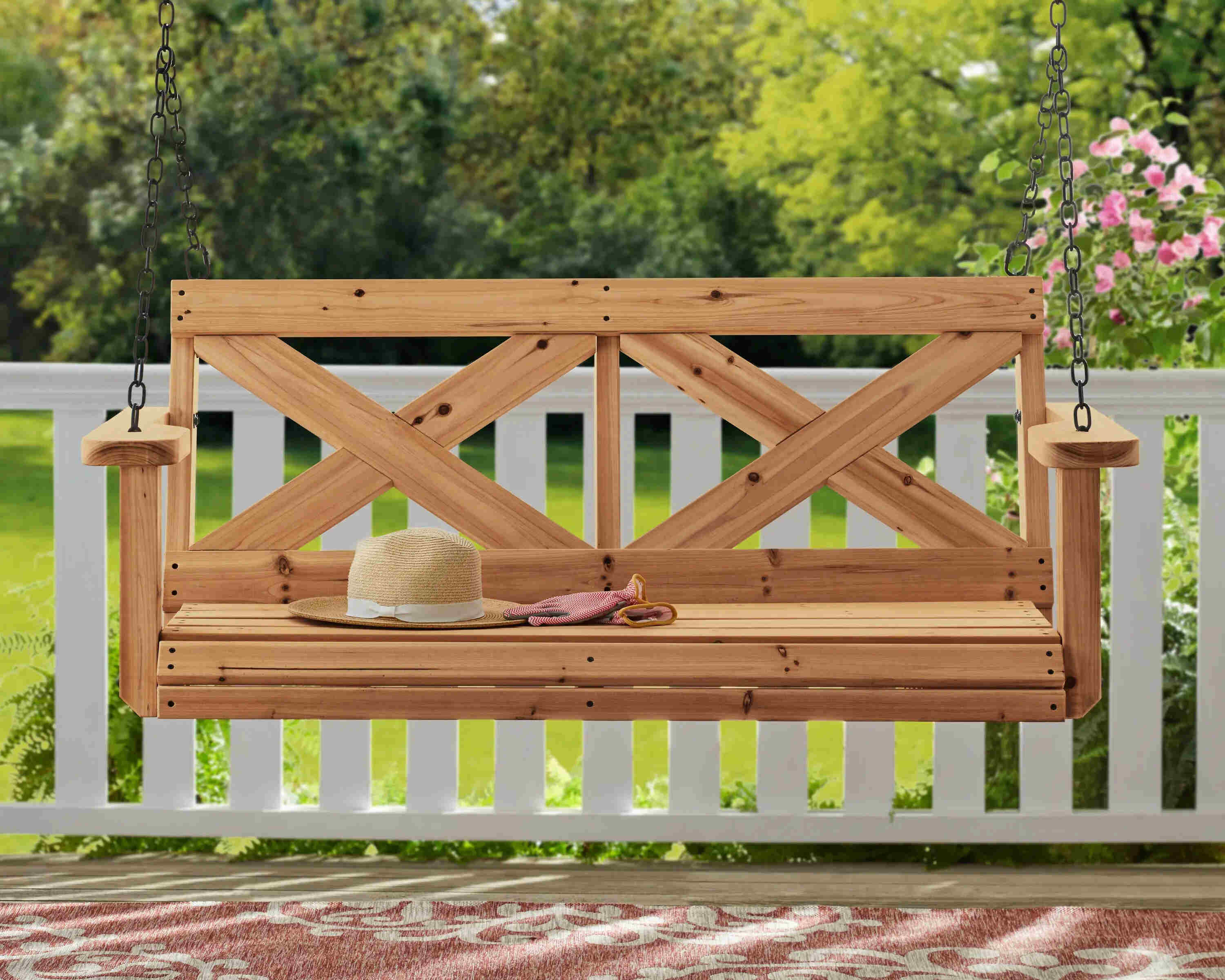

Articles
How Do You Hang A Porch Swing
Modified: January 8, 2024
Learn how to hang a porch swing with our informative articles. Get expert tips and advice for a safe and comfortable swing installation.
(Many of the links in this article redirect to a specific reviewed product. Your purchase of these products through affiliate links helps to generate commission for Storables.com, at no extra cost. Learn more)
Introduction
Welcome to the world of porch swings, where relaxation and tranquility await you. Hanging a porch swing is not just about adding a charming piece of furniture to your outdoor space; it’s about creating a cozy retreat that beckons you to unwind and enjoy the simple pleasures of life.
But how do you hang a porch swing? It may seem like a daunting task, but fear not! In this comprehensive guide, we will walk you through the steps to ensure a successful installation. From choosing the perfect spot for your swing to selecting the right hardware, we’ve got you covered.
So, take a deep breath, put on your DIY hat, and let’s get started on this delightful journey to hanging your very own porch swing!
Key Takeaways:
- Create a cozy outdoor retreat by choosing the perfect spot, ensuring safe installation, and prioritizing maintenance for your porch swing. Enjoy countless moments of relaxation and tranquility in your outdoor oasis.
- Prioritize safety and maintenance to ensure your porch swing remains a safe and inviting space for years to come. Cherish the simple pleasures and create lasting memories in your outdoor sanctuary.
Read more: How Do You Build A Porch Swing
Choosing the Right Spot for Your Porch Swing
Before you start hanging your porch swing, it’s important to choose the right spot for it. The location will not only impact the aesthetics of your outdoor space but also the overall comfort and functionality of the swing.
Here are a few factors to consider when selecting the spot for your porch swing:
- Space availability: Ensure that you have enough space to accommodate the swing comfortably. Measure the area where you plan to hang the swing, considering both the swing’s width and the space needed for it to swing freely.
- Proximity to nature: If you want to enjoy the serene beauty of your surroundings while swinging, choose a spot that offers a pleasant view. It could be overlooking your garden, a calming lake, or just a cozy corner with lush greenery.
- Shade and sun exposure: Determine whether you want your swing to be in the shade or exposed to the sun. Consider the time of day when you’re most likely to use the swing and choose a spot accordingly. If you prefer shade, look for areas with natural shade from trees or consider adding a canopy or umbrella for extra protection.
- Privacy: Consider how much privacy you desire when using your porch swing. Factor in the visibility from neighbors’ houses or busy streets. You may want to position the swing in a secluded area to create a sense of intimacy and relaxation.
Once you have evaluated these factors, take some time to envision how the swing will fit into your overall outdoor space. Consider the layout, existing furniture, and the flow of foot traffic. Aim for a spot that seamlessly blends with the rest of your patio or deck.
Remember, the right spot for your porch swing is subjective and depends on your personal preferences and needs. So, take your time to choose a location that will offer you the utmost enjoyment and comfort.
Determining the Height and Space Requirements
Once you have chosen the perfect spot for your porch swing, it’s important to determine the height and space requirements for hanging it. This will ensure that your swing is both safe and comfortable to use.
Here are a few key considerations when determining the height and space requirements:
- Clearance: Allow for ample clearance around the swing to ensure that it can swing freely without hitting any walls, posts, or other obstacles. A general rule of thumb is to have at least two feet of clearance on all sides.
- Seat height: Consider the height of the swing’s seat and how it will align with the area you plan to hang it. Ensure that the seat height is comfortable for sitting and swinging. You may need to adjust the length of the chains or ropes to achieve the desired height.
- Ground clearance: Check the distance between the swing’s seat and the ground. This is particularly important if you have a low porch or if the swing will be installed in an area with uneven terrain. Aim for a ground clearance that allows for easy access to the swing and comfortable swinging motion.
- Weight capacity: Consider the weight capacity of your swing and ensure that the installation spot can support it. This is especially important if you plan to have multiple people sitting on the swing or if you have a more robust swing design.
When determining the height and space requirements, it’s always a good idea to refer to the manufacturer’s guidelines and recommendations. They may provide specific instructions based on the type of swing you have purchased.
Keep in mind that these requirements may vary depending on the design and style of your porch swing. So, take the time to carefully assess the height and space considerations to ensure a safe and enjoyable experience when using your swing.
Selecting the Right Hardware and Mounting Options
Choosing the right hardware and mounting options is crucial for the stability and longevity of your porch swing. It’s important to select high-quality materials that can withstand the outdoor elements and provide a secure and reliable installation.
Here are some key factors to consider when selecting the hardware and mounting options for your porch swing:
- Chains or ropes: Decide whether you prefer using chains or ropes to hang your swing. Chains are durable and provide a sturdy support system, while ropes give a more rustic and natural look. Whichever option you choose, ensure that they are weather-resistant and have a weight capacity suitable for your swing.
- Hooks and eye bolts: Look for heavy-duty hooks or eye bolts that are specifically designed for outdoor use. These should be made of corrosion-resistant materials such as stainless steel or galvanized steel to withstand moisture and harsh weather conditions.
- Mounting location: Depending on your porch’s construction, you may need to consider different mounting options. If you have a sturdy beam or joist, you can attach the hardware directly to it. Alternatively, if your porch lacks suitable structural support, you may need to install a swing stand or use a swing frame kit.
- Swing accessories: Consider any additional accessories you may need for your porch swing. This may include cushions, pillows, or a canopy for added comfort and style. Make sure to choose accessories that are weather-resistant and can withstand exposure to the elements.
When selecting the hardware, it’s essential to carefully read the manufacturer’s instructions and follow their recommendations. They may provide specific guidelines on the type and size of hardware that best suits your swing model.
Furthermore, it’s always a good idea to consult with a professional or experienced handyman if you’re unsure about the hardware selection or mounting options. They can provide valuable advice and ensure that your porch swing is installed safely and securely.
By selecting the right hardware and mounting options, you will lay the foundation for a stable and enjoyable porch swing experience.
Preparing the Porch for Hanging
Before you begin the process of hanging your porch swing, it’s important to prepare your porch to ensure a secure and stable installation. Taking the time to prepare the area will help prevent any potential damage to your porch and ensure a smooth and hassle-free hanging process.
Here are some steps to prepare your porch for hanging:
- Clean the area: Clear the area where you plan to hang your swing. Remove any obstacles, such as furniture, plants, or decorations, to create a clear and open space.
- Inspect the porch: Carefully examine your porch for any signs of damage or weakness. Check for rotting or deteriorating wood, loose boards, or cracks. Address any repairs or maintenance issues before proceeding with the installation.
- Measure and mark the mounting location: Use a measuring tape to determine the exact spot where you will hang your swing. Mark this location with a pencil or tape to ensure accuracy during the installation process.
- Reinforce the area: If you’re attaching the swing to a wooden beam or joist, consider reinforcing it for added stability. You can use metal braces or additional screws to secure the beam and prevent it from wobbling or sagging.
- Paint or stain the porch: If desired, take this opportunity to freshen up your porch’s appearance by painting or staining it. Choose a finish that complements your porch swing and protects the wood from the elements.
- Create a seating area: Consider adding a cozy seating area around your porch swing. This could include outdoor rugs, chairs, or side tables for a complete and inviting outdoor space.
By properly preparing your porch, you’ll ensure a solid foundation for hanging your porch swing. Take the time to assess the area and address any necessary repairs or enhancements to create a safe and beautiful space for relaxation.
Read more: How To Hang Porch Swing With Rope
Assembling the Porch Swing
Now that you have prepared your porch and selected the perfect spot, it’s time to assemble your porch swing. Although the specific assembly instructions may vary depending on the model you have purchased, here are some general guidelines to help you through the process:
- Read the instructions: Start by carefully reading the manufacturer’s assembly instructions. Familiarize yourself with the components and follow the step-by-step guidelines provided.
- Lay out the parts: Lay out all the components of your porch swing in a clear and organized manner. This will make it easier to identify each part as you progress through the assembly process.
- Assemble the frame: Begin by assembling the frame of the swing. This usually involves connecting the main support beams, seat supports, and any additional bracing according to the instructions provided. Use the necessary tools, such as wrenches or screwdrivers, to securely fasten the components together.
- Attach the seat and backrest: Once the frame is assembled, attach the seat and backrest to the designated areas. Ensure that the seat and backrest are aligned properly and that all screws or bolts are tightly secured.
- Install any additional features: If your porch swing comes with additional features, such as an attached side table or canopy, follow the instructions provided to install these components. Take your time to ensure proper alignment and attachment.
- Tighten all fasteners: Once the swing is fully assembled, go through all the fasteners and tighten them as needed. This will ensure that the swing is sturdy and safe when it is hung on your porch.
Throughout the assembly process, it’s important to refer back to the instructions and double-check that each step is properly completed before moving on to the next one. If you encounter any difficulties or have any questions, don’t hesitate to reach out to the manufacturer’s customer support for assistance.
Assembling your porch swing can be a rewarding and enjoyable experience. Take your time, follow the instructions, and soon you’ll have a beautifully crafted swing ready to be hung on your porch.
When hanging a porch swing, make sure to use strong and sturdy hardware, such as heavy-duty chains or ropes, and to securely attach the swing to a solid support beam or ceiling joist to ensure safety and stability.
Attaching the Swing to the Porch
With your porch swing assembled, it’s time to attach it to your porch and bring your outdoor oasis to life. Properly securing the swing is essential for safety and stability, ensuring that you can enjoy it for years to come. Follow these steps to attach your porch swing:
- Locate the mounting point: Referencing the markings you made during the preparation stage, identify the exact spot on your porch where you will attach the swing. Ensure that it provides sufficient clearance and is structurally sound.
- Install the hardware: Depending on the mounting options you have chosen, proceed to install the necessary hardware. If you’re using chains or ropes, attach them securely to the swing’s designated attachment points. For eye bolts or hooks, drill pilot holes and carefully screw them into place, ensuring they are firmly secured.
- Test the stability: Before fully committing to hanging the swing, test its stability by gently giving it a few pushes. Ensure that it is balanced and swings smoothly without any wobbling or uneven movement. Make any necessary adjustments to the hardware or positioning if needed.
- Double-check the security: Once you’re satisfied with the swing’s stability, double-check that all hardware is securely fastened. Use a wrench or pliers to tighten any nuts or bolts, ensuring there is no risk of the swing coming loose.
- Hang the swing: Finally, it’s time to hang your porch swing. Lift the swing and carefully attach the chains or ropes to the mounting hardware, ensuring they are evenly distributed. Have someone assist you in holding the swing while you attach it, or use a step ladder to reach the mounting point safely.
- Test the swing: Once the swing is securely hung, take a moment to test it by sitting on it and giving it a few gentle swings. Ensure that it moves smoothly and comfortably without any issues.
As you attach your porch swing, always prioritize safety. Be mindful of weight capacities, follow the manufacturer’s recommendations, and ensure that the hanging hardware is appropriate for the swing’s design and construction.
It’s also important to periodically check the swing’s attachment points for any signs of loosening or wear. Regular maintenance and inspections will help keep your porch swing secure and in optimal condition for many seasons of enjoyment.
Safety Considerations and Maintenance Tips
When it comes to enjoying your porch swing, safety should always be a top priority. By following these safety considerations and maintenance tips, you can ensure that your swing remains a safe and inviting space for relaxation.
Safety Considerations:
- Weight capacity: Take note of the weight capacity of your porch swing and ensure that it is not exceeded. Overloading the swing can compromise its integrity and pose a safety risk.
- Proper usage: Be mindful of how the swing is used. Reinforce to everyone who uses it to sit facing forward and avoid any rough or excessive swinging that could jeopardize stability.
- Check the hardware: Regularly inspect the chains, ropes, hooks, eye bolts, and other hardware used to hang the swing. Look for signs of rust, wear, or damage, and promptly replace any compromised parts.
- Secure loose items: Remove or secure any loose items, such as pillows or cushions, when not in use. These can become projectiles in strong winds or pose tripping hazards.
- Supervise children: Always supervise children when they are using the porch swing. Ensure that they understand and adhere to safety guidelines, including avoiding standing or jumping on the swing.
Read more: How To Hang A Porch Swing From A Tree
Maintenance Tips:
- Regular cleaning: Keep your porch swing clean by regularly wiping it down with a damp cloth. For wooden swings, consider applying a coat of outdoor sealant or varnish annually to protect it from the elements.
- Weather protection: If your swing is exposed to the elements, consider using a weather-resistant cover during harsh weather conditions to prolong its lifespan.
- Inspect the structure: Periodically inspect the overall structure of the swing, including the frame, seat, and backrest. Look for any signs of damage, such as cracking or warping, and address any repairs promptly.
- Tighten hardware: Regularly check and tighten the hardware attaching the swing to the porch. Over time, these may loosen, so it’s important to ensure they remain secure.
- Replace worn-out parts: If you notice any worn-out or damaged parts, such as frayed ropes or rusted chains, replace them immediately to maintain the safety and functionality of the swing.
By following these safety considerations and maintenance tips, you can enjoy your porch swing with peace of mind, knowing that it is a safe and well-maintained space for relaxation and enjoyment.
Conclusion
Congratulations on successfully hanging your porch swing! You’ve taken the necessary steps to choose the perfect spot, determine the height requirements, select the right hardware, prepare your porch, assemble the swing, and attach it securely. Now, you can sit back, relax, and enjoy the beautiful outdoor oasis you’ve created.
A porch swing is more than just a piece of furniture; it’s a symbol of tranquility, a place to unwind, and a cozy spot to enjoy the simple pleasures of life. Whether you’re reading a book, sipping a cup of coffee, or simply taking in the view, your porch swing will provide countless moments of relaxation and rejuvenation.
Remember to prioritize safety by adhering to weight capacities, following proper usage guidelines, and regularly inspecting and maintaining your swing. By doing so, you can ensure that it remains a safe and inviting space for years to come.
As you swing gently back and forth, let the gentle breeze carry away your worries and immerse yourself in the blissful serenity of your outdoor retreat. Cherish the moments spent on your porch swing, creating memories and finding solace in the simple pleasures that life has to offer.
So, go ahead, grab a pillow, settle into your swing, and let the world fade away. Your porch swing is ready to provide you with countless moments of relaxation, peace, and contentment.
Frequently Asked Questions about How Do You Hang A Porch Swing
Was this page helpful?
At Storables.com, we guarantee accurate and reliable information. Our content, validated by Expert Board Contributors, is crafted following stringent Editorial Policies. We're committed to providing you with well-researched, expert-backed insights for all your informational needs.














0 thoughts on “How Do You Hang A Porch Swing”